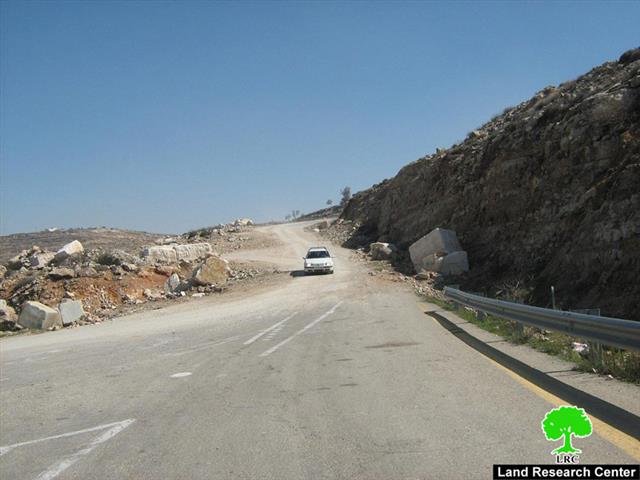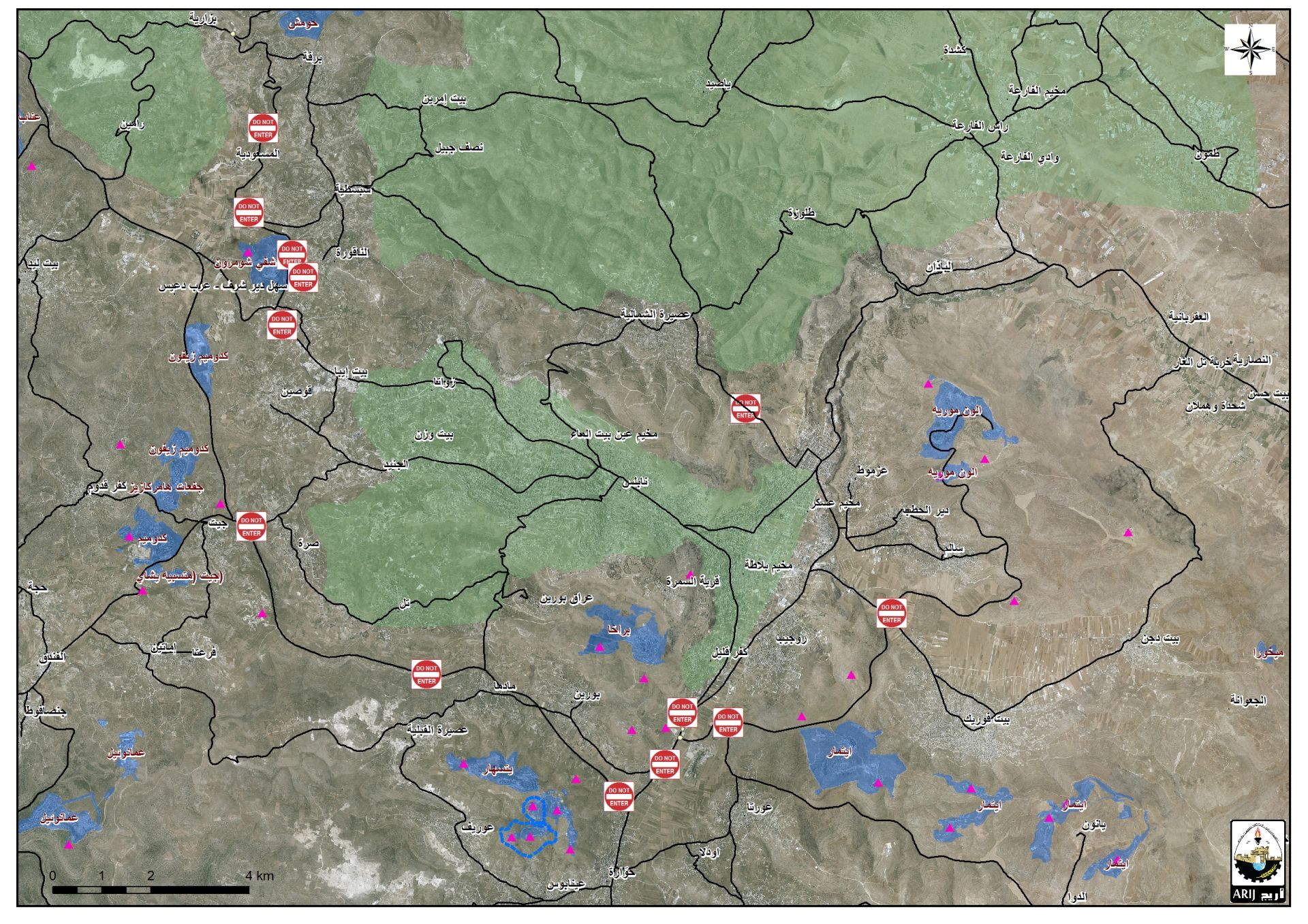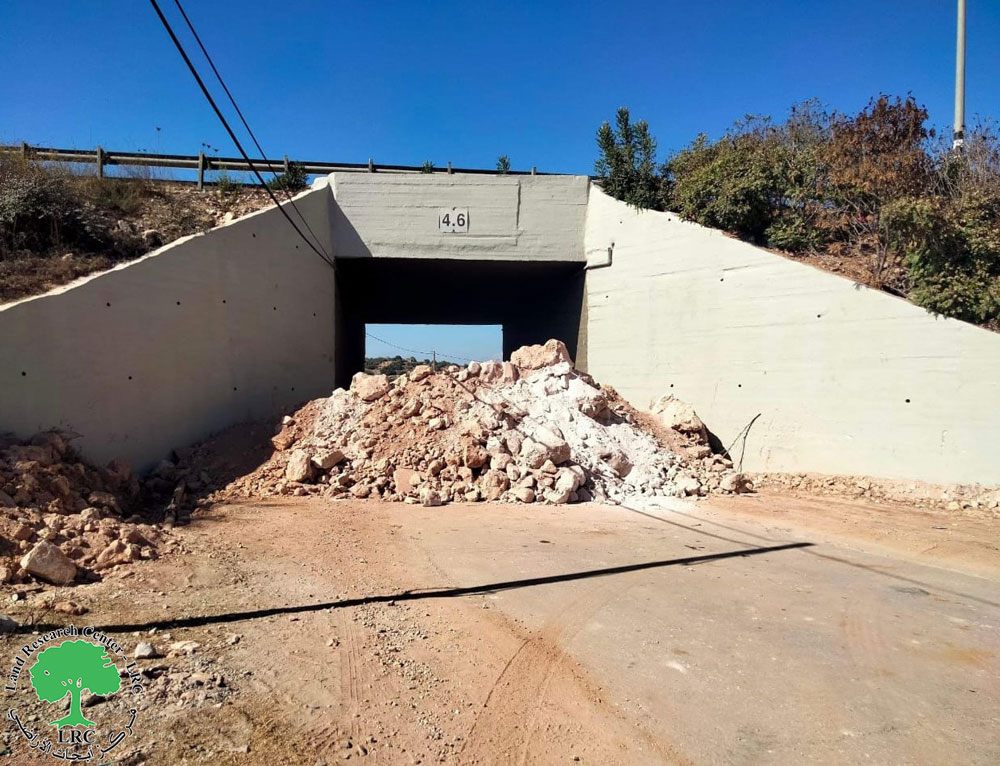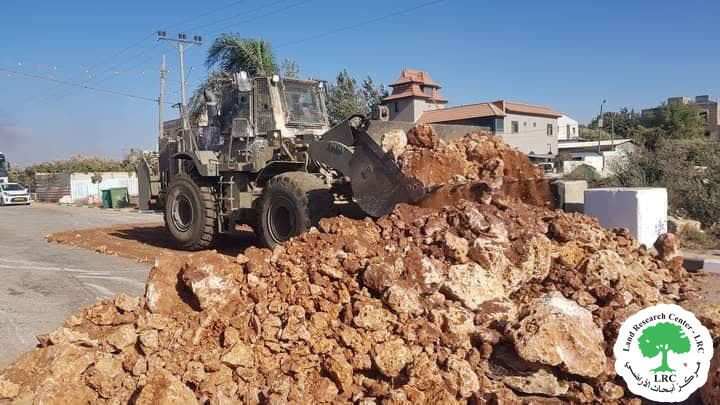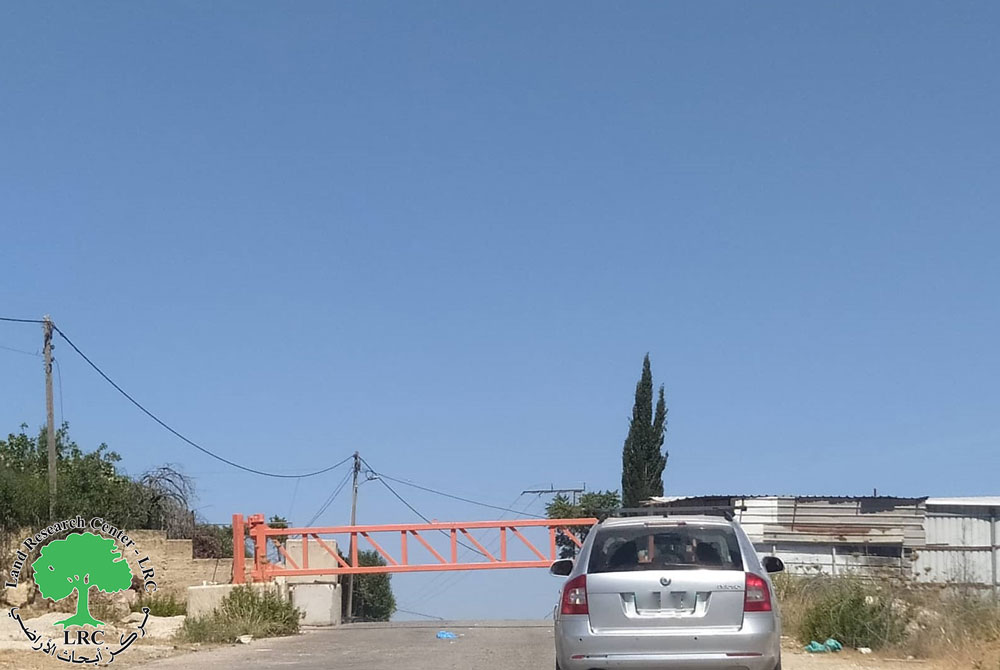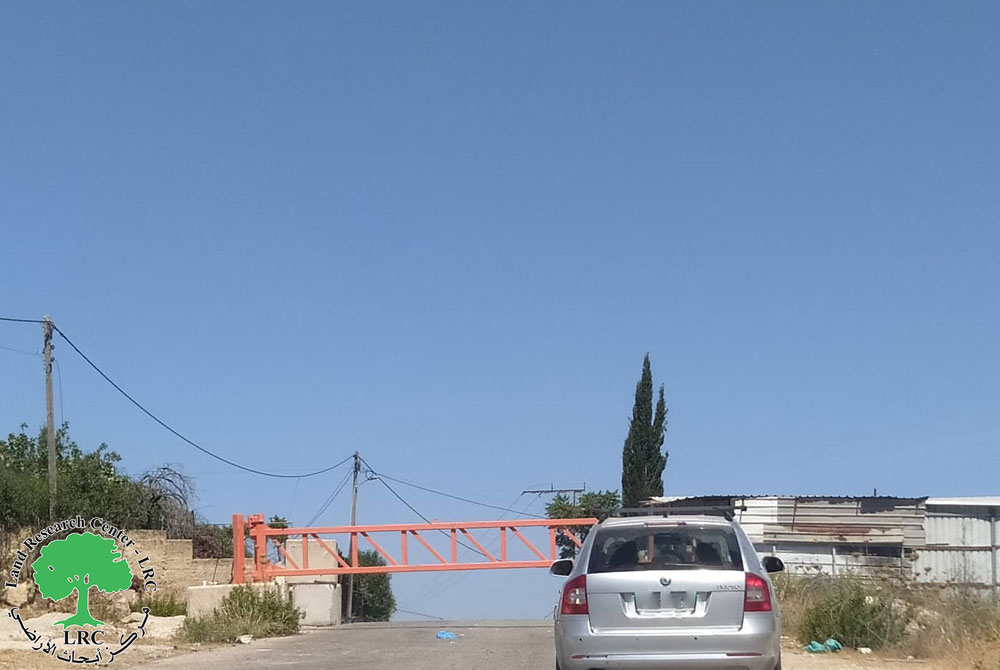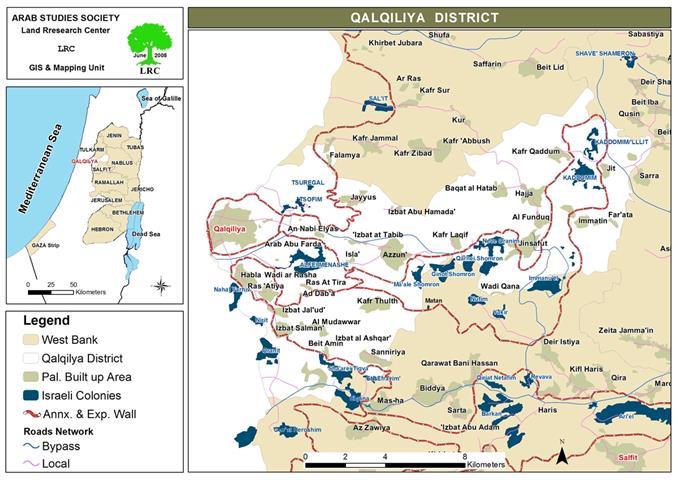Bani Na'im, Hebron: a Jalajel road after re-opening
On February 14th, 2009, the Israeli occupation forces lifted all the roads barrier that were blocking the entrances to Bani Na'im town since the beginning of the second Intifada in the year 2000.
Mr. Radwan Manasra, the head of Bani Na'im municipal council said in an interview with LRC field researcher that the army's bulldozers arrived at the scene and began to open the cement blocks, earth and rock mounds that were blocking the entrances to the town after a long process of legal complaints presented to Israeli courts against the blockage which lasted for nine years.
The opening of Wadi Al Juz main entrance road was the most important move in this regards in addition to two other vital roads: Khalet Al Warda and Al Jalajel. Mr. Manasra went on to say that the closure of these three vital roads had blocked all the attempts made by the municipal council to re-build them. After the latest development there is a real possibility for re-building and enlargement. During the closure time all the citizens of Bani Na'im were using a 32 km long alternative road through mountains to reach the city of Hebron instead of the original 14 km long road to Hebron.
(Photo 1: Bani Na'im, Hebron: one of the rugged road that was used during the closure period to reach the city of Hebron )
Taxi and lorry drivers had to pay the biggest price for the closure because of the use of unsuitable roads that inflicted heavy damage to their vehicles. Bani Na'im is a prominent stone producing town and, therefore, dozens of lorries have to enter its boundaries every day, however, this process has been badly interrupted by the closure and the use of dirt and uneven surface roads through out the nine years of closure.
(Photo 2+3: Bani Na'im, Hebron: respectively Wadi Al Juz and Khlaet Al Warda after re-opening )
According to Bani Na'im municipality, the estimated financial losses inflicted on the town as a result of the closure has been 50 US $ per year, or 450000 US $ on the total for the nine year period.
(Photo 5: Bani Na'im, Hebron: big rocks and earth mound that were blocking the Jalajel road )
(Photo 6: Bani Na'im, Hebron: concrete blocks that were blocking the Wadi Al Juz road )
(Photo 7: Bani Na'im, Hebron: a taxi traveling Wadi Al Juz road after re-opening heading to Hebron city)
A cancer nucleus
In 1967 the Israeli occupation authorities took control over 15 dunums of land located in Wadi Al Juz at the main entrance to the town at the distance of only 3 km from Kiriayt Arba'a colony. Nowadays, the 15 dunums became 40 surrounded with a barbed wire fence and metal gate and guarded by the army 24 hours a day. Currently, an Israeli settler settles the land after it had been provided with necessary infrastructure such as electricity, water and sewage. Also, two caravans (mobile homes) were introduced to the scene. Local citizens are worried of the likelihood of establishing a bigger colony at the site and, consequently, taking more of Bani Na'im's land not alone separating it from Hebron.
Photo 8: Bani Na'im, Hebron: location of the confiscated land at the main entrance to the town
Photo 9: Bani Na'im, Hebron: the confiscated land being guarded by Israeli soldiers
( Photo 10: Bani Na'im, Hebron: an iron gate that leads to the confiscated land )
Background to Bani Na'im
It is situated 8 km to the east of Hebron city. It's total surface land area is 157774 dunums of which 98220 dunumd as built up zone. At the end of 2008 the total population toll was 22300. Bani Na'im is surrounded by the land of Hebron city, Sa'ir, Yatta, Jahalin and Ka'abna lands.
(Photo 11: Bani Na'im, Hebron: to the left is the colony of KiriyatArba'a facing Bani Na'im and to the right is the city of Hebron)
Prepared by:
The Land Research Center
LRC


